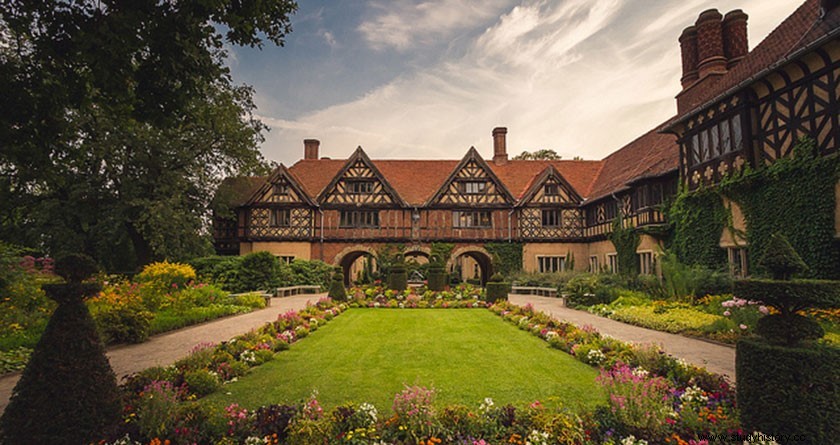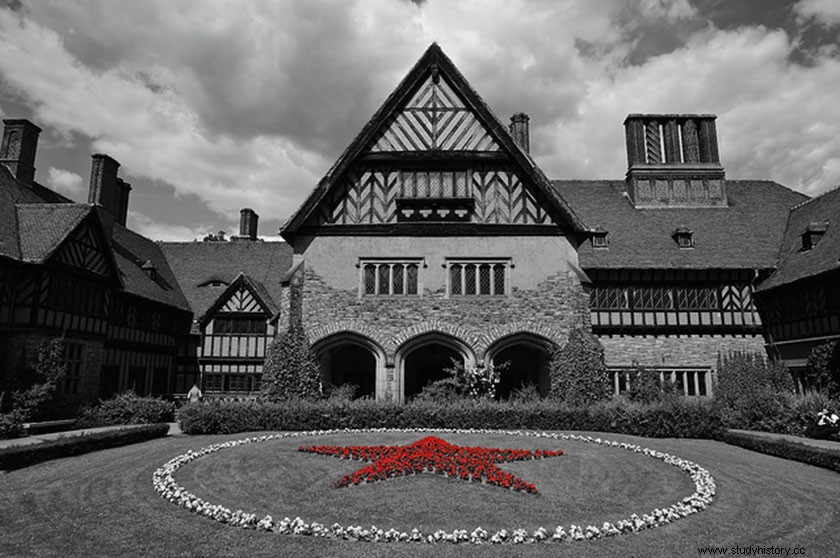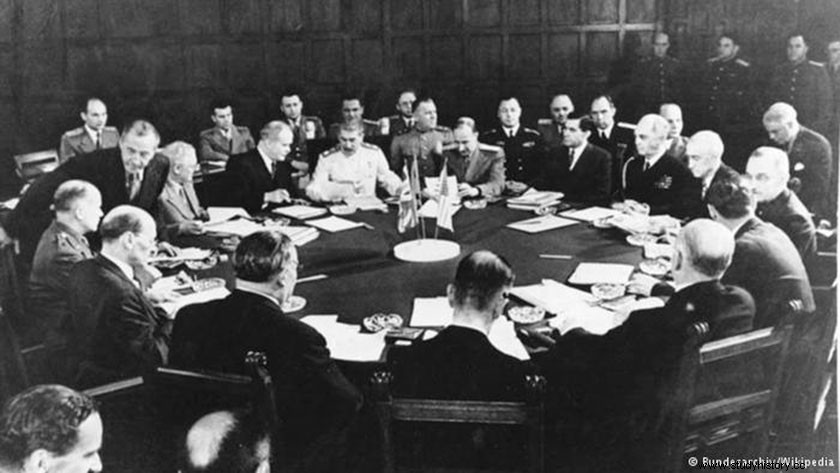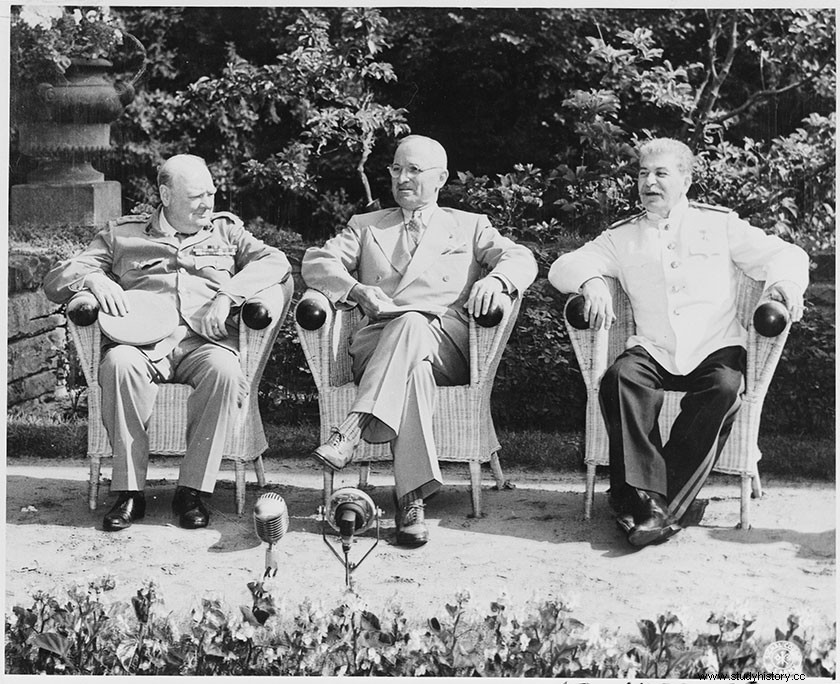
The protagonist of our story is the Cecilienhof Palace . A place destined at the beginning of the 20th century to be the abode of the king of the German Empire, but which will spend most of its existence in ostracism, from which it only came out on those fateful fifteen days in the summer of 1945, in which it will enter history through the back door.
His story begins in the winter of 1914, the then Emperor of the Second German Reich, Wilhelm II, decides to build a palace for his son and heir Wilhelm, the oldest of seven siblings. The chosen place was recently remodeled, and was known as the New Garden . It was a spectacular English-style park on the outskirts of Potsdam.

Although problems will soon begin, on June 28, 1914, a great friend of William II, Archduke Francis Ferdinand of Habsburg, was assassinated. Germany's response was immediate, despite William's own initial reticence, the determined German military and its perfect Schlieffen plan sent Germany, and later the world, into its First World War.
Despite everything in the middle of the world war, the palace continued to be built, until it was completed in 1917. On the day of its inauguration in August of that year, the spectacular English Tudor-style palace , had 6 patios, 55 fireplaces and 176 rooms. The future king stayed there with his wife Cecilia of Mecklenburg-Schwerin, from whom he adopted the name, and his 5 children, since the last one was born days later in said palace. Prince William's joy would not last long, the following year after Germany lost the war, he was forced to go into exile in Holland with his father, his wife would remain in the Palace until 1945.
The monarchy was abolished at the end of the war, despite which the prince promoted by his father, and last German emperor Wilhelm II, returned several times during the first years of Hitler's mandate. In short, the House of Hohenzollern always believed in the possibility that the dictator would return the Crown to them. They were obviously wrong, Hitler's plans were somewhere else. Those plans exploded in September 1939, sending Germany this time and the world again into the most devastating war in history. Princess Cecilia remained in the Palace until the end of the war, just a few days before the arrival of the Red Army in Potsdam, at which point she was forced to leave. Just a few months later, this magnificent Palace was about to enter world history, during its fifteen days of glory.

Stalin's surprise.
On July 26, 1945, Josif Stalin, General Secretary of the Communist Party of the USSR, (who by the way got ahead of his companions, decorated the courtyard with a red star) , Winston Churchill relieved by Clement Attlee as Prime Minister of the United Kingdom that same day, and Harry S. Truman, president of the United States, met at Cecilienhof Palace to change the world.
The first agreement they reached that same day was to make the so-called Potsdam Declaration , Truman, Churchil and the President of the Republic of China Chiang Kai-Shek made an ultimatum to Japan, either they surrender or the entire Allied force would fall on the country. The result is known; on August 6 the first atomic bomb fell on Hiroshima, on August 9 the next on Nagasaki.

Meetings at Cecilienhof
The rest of what happened in the Cecilienhof Palace, was from the so-called Potsdam Conference , that is to say, to put the signature to the numerous agreements that the allies reached during the war. In other words, the end of the terrible World War 2, the division of Germany between Russia, the US, the UK and France.

Churchill, Truman and Stalin, the three winners of WW2
Ultimately these two facts; (The atomic bomb and the distribution of Germany, will lay the foundations of the Cold War). The next day Stalin joined the atomic race that the US had previously started, a fact that will keep the world in suspense until the fall of the Soviet regime in 1989.
Meanwhile, the protagonist of this story will be forgotten, and completely abandoned. A fact that can lead us to understand his ostracism during the Cold War, is the few meters that separate the Cecilienhof Palace from the Glienicke Bridge, which will go down in history as the ideal point, due to its discretion, of exchanges of spies between the two powers, the USA and the USSR. Finally, it is important to note that during those years, Potsdam belonged to the German Democratic Republic, one of the countries closest to the communist power.
After the fall of the Iron Curtain and the Berlin Wall in 1989, the Palace will be recovered to be one of the many monuments that make Potsdam one of the most beautiful cities in Germany. Today you can enjoy a museum and a fantastic hotel in the magnificent surroundings of the New Garden.
Article previously published in Queaprendemoshoy.com on February 16, 2017
Images:commons.wikimedia
